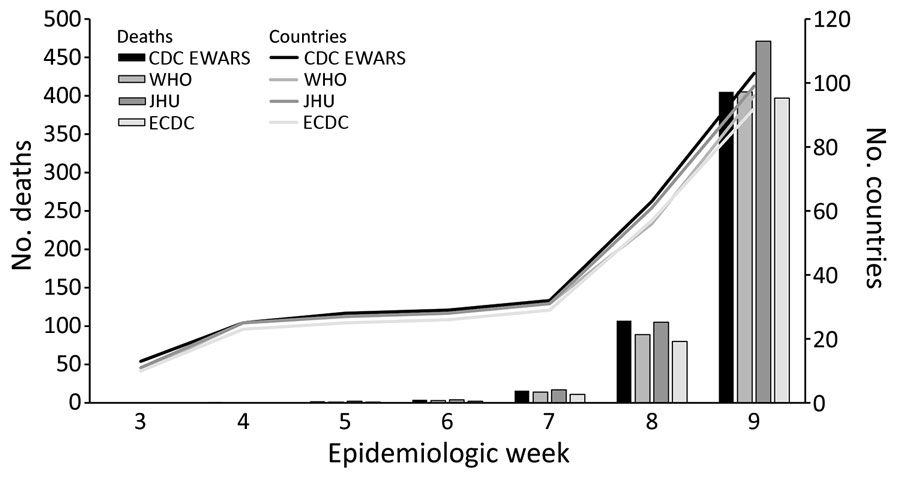Volume 28, Supplement—December 2022
SUPPLEMENT ISSUE
Surveillance
Lessons Learned from CDC’s Global COVID-19 Early Warning and Response Surveillance System
Figure 4

Figure 4. Cumulative reported confirmed COVID-19 deaths and cumulative number of countries reporting confirmed COVID-19 cases for CDC EWARS, JHU, WHO, and ECDC systems during epidemiologic weeks 3–9, January 20–March 7, 2020. WHO death counts were used as CDC EWARS inputs after epidemiologic week 8. Scales for the y-axes differ substantially to provide data on 2 different indicators and are not intended for direct comparisons. CDC EWARS, US Centers for Disease Control and Prevention global COVID-19 Early Warning and Response Surveillance system; ECDC, European Centers for Disease Control; JHU, Johns Hopkins University Center for Systems Science and Engineering; WHO, World Health Organization.
Page created: June 01, 2022
Page updated: December 11, 2022
Page reviewed: December 11, 2022
The conclusions, findings, and opinions expressed by authors contributing to this journal do not necessarily reflect the official position of the U.S. Department of Health and Human Services, the Public Health Service, the Centers for Disease Control and Prevention, or the authors' affiliated institutions. Use of trade names is for identification only and does not imply endorsement by any of the groups named above.